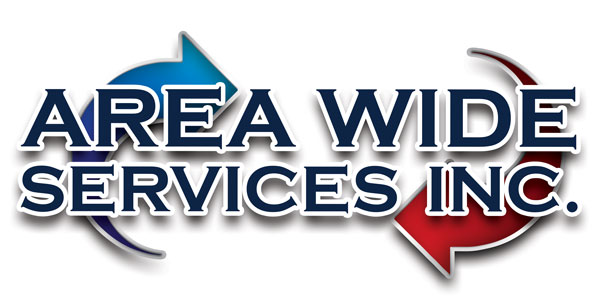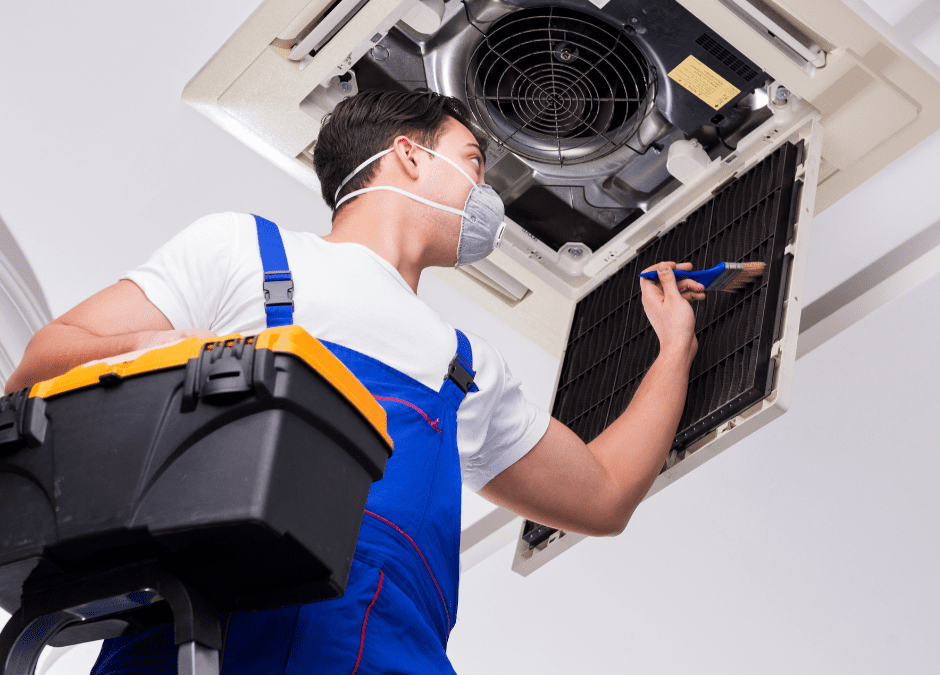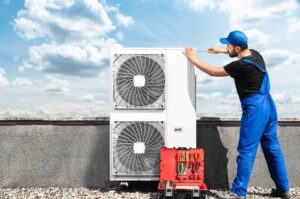When it comes to commercial buildings, air conditioning units are a critical component in maintaining a comfortable environment for customers and employees. However, installing a commercial air conditioning installation unit is a complex and specialized process that requires a comprehensive understanding of the system and its components. While following a commercial AC unit installation guide, such as the one provided by Brink Inc. in Montana, is crucial, it’s also essential to understand the various types of AC systems, the most common HVAC issues, and the importance of regular HVAC maintenance to ensure optimal system performance and longevity. In this article, we will delve into these topics extensively.
Step 1: Evaluate the Space
The first step in any commercial air conditioning installation is to evaluate the space where the unit will be installed. This includes measuring the square footage of the space, assessing the current HVAC system, and determining the cooling load. The cooling load refers to the amount of cooling required to maintain a comfortable temperature in the space.
Evaluating the space is important because it helps determine the type and size of AC unit needed to effectively cool the space. Installing an undersized or oversized unit can lead to inefficient cooling, higher energy costs, and premature system failure.
Step 2: Choose the Right AC Unit
Once the space has been evaluated, the next step is to choose the right AC unit. There are many factors to consider when choosing a commercial AC unit, such as the type of building, the number of occupants, and the desired level of comfort.
Brink Inc. recommends choosing an AC unit that has a high seasonal energy efficiency ratio (SEER) rating. This rating indicates the unit’s energy efficiency, with higher ratings indicating better efficiency. Choosing an energy-efficient unit can help lower energy costs and reduce environmental impact.
Step 3: Prepare the Installation Area
Ensuring a smooth and safe installation process requires proper preparation of the installation area. This includes clearing the area of any obstacles, ensuring proper ventilation, and providing adequate access to the unit.
It’s important to note that the installation area should also be in compliance with local building codes and regulations. Failure to comply with these regulations can result in fines and potentially unsafe operating conditions.
Step 4: Install the AC Unit
Additionally, following a commercial air conditioning installation guide, such as the one provided by Brink Inc., can also help ensure a successful installation process. The guide will provide detailed instructions and safety precautions to follow during the installation process, as well as information on necessary tools and equipment. By working with a professional contractor and following an installation guide, businesses can ensure a safe, efficient, and effective installation of their commercial air conditioning system.
Step 5: Test the System
After the installation is complete, it’s important to test the AC unit to ensure that it’s functioning properly. This includes checking the refrigerant levels, airflow, and temperature output. It’s also important to check for any leaks or other issues that could impact the system’s performance.
Regular maintenance and servicing are also crucial to ensure that the AC unit continues to function properly. Tasks that are part of this include the cleaning or replacement of air filters, inspection for any leaks, and lubrication of moving parts.
Types of AC Systems
When it comes to commercial air conditioning installation, choosing the right type of system is crucial for ensuring optimal cooling and energy efficiency. The most common types of AC systems for commercial buildings include central AC systems, ductless mini-split AC systems, and window AC units.
- Central AC systems are typically the most efficient and effective option for larger buildings and homes. They use a central unit to cool and circulate air throughout the entire building, making them ideal for maintaining consistent temperatures throughout the space.
- Ductless mini-split AC systems are ideal for cooling individual rooms or areas within a building. They consist of a small outdoor unit and an indoor unit that is connected by a conduit that carries refrigerant. These systems are highly efficient and offer more flexibility in terms of zoning, allowing businesses to cool only the areas they need to, which can result in significant energy savings.
- Window AC units are designed to fit into a window and cool a single room or area. They are affordable and easy to install, but they are less energy-efficient than central or mini-split systems. As such, they are typically only used in smaller commercial spaces or as a temporary cooling solution.
- Regardless of the type of system chosen for commercial air conditioning installation, regular HVAC maintenance is crucial for ensuring optimal system performance and energy efficiency. By implementing these measures, businesses can ensure a comfortable environment for their customers and employees while minimizing energy costs and maximizing the lifespan of their HVAC systems.
Common HVAC Issues
Despite the type of AC system, various issues can occur that may affect their performance. A few HVAC issues that are frequently encountered are:
- Refrigerant Leaks: AC systems rely on refrigerant to cool the air. When there is a leak, the refrigerant level drops, leading to inefficient cooling.
- Dirty Air Filters: Dirty air filters restrict airflow, making it harder for the system to cool the air effectively. As a consequence, this could result in elevated energy costs and premature system malfunction.
- Faulty Thermostat: A faulty thermostat can cause the system to turn on and off frequently, leading to increased energy consumption and reduced system lifespan.
HVAC Maintenance
Regular HVAC maintenance is crucial for ensuring optimal performance and longevity of commercial air conditioning installation systems. Some essential HVAC maintenance tasks include:
- Regularly replacing air filters to improve airflow and indoor air quality.
- Cleaning the outdoor unit to remove debris and maintain proper airflow.
- Checking refrigerant levels and repairing any leaks to ensure optimal cooling.
- Lubricating moving parts to reduce wear and tear and prevent premature system failure.
Conclusion
In conclusion, air conditioning (AC) systems are essential for maintaining a comfortable environment for customers and employees in commercial buildings, particularly during the hot summer months. Installing a commercial air conditioning installation unit requires careful planning, attention to detail, and a comprehensive understanding of the system and its components. Following a commercial AC unit installation guide, such as the one provided by Brink Inc., can help ensure a successful installation process and optimal performance of the AC unit. Moreover, regular HVAC maintenance is crucial for addressing the most common HVAC issues and ensuring optimal performance and energy efficiency of the AC system. It’s also important to work with a professional HVAC contractor who has the knowledge, skills, and experience necessary to install and maintain the unit properly. By implementing these measures, businesses can ensure a comfortable environment for their customers and employees while minimizing energy costs and maximizing the lifespan of their HVAC systems.
Additionally, it’s important for businesses to have access to emergency repair services in case there is air conditioning installation experiences any issues or malfunctions. Area Wide Services Inc. offers 24/7 emergency repair services to ensure that businesses can quickly and efficiently address any HVAC problems and prevent disruptions to their operations. It’s important to have a reliable and experienced HVAC contractor like Area Wide Services Inc. on hand to provide fast and effective repairs to minimize downtime and ensure optimal system performance.
Contact Area Wide Services today!
Contact us today to schedule a free consultation! We specialize in installing and repairing HVAC and refrigeration systems such as air conditioners, heaters, heat pumps, furnaces, commercial refrigerators, freezers, ice machines, walk-in freezers, and more. Call Area Wide Services at (903) 467-5620 today!
Schedule Your HVAC Service With Area Wide Services Today
If your AC isn't keeping up or has stopped working, don’t let the heat create a dangerous situation. Call Area Wide Services today to receive prompt, reliable service that gets your home or office comfortable again.
Day, night or weekend, we are ready to take your call 24/7 and have the experience you need to repair, replace or maintain any unit of any size.
Contact us today to schedule a service appointment.


